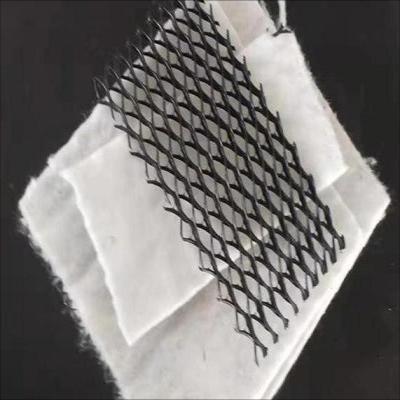Composite drainage network It is a material commonly used in highways, railways, tunnels, landfills and other projects. It not only has good drainage performance, but also has very good structural stability.
1. The importance of overlapping composite drainage network
Composite drainage net is composed of mesh core and upper and lower layers of geotextile, which has very good drainage, isolation and reinforcement functions. During the construction process, because the project area often exceeds the size of a single drainage net, overlap is very important. A reasonable overlap width can not only ensure the continuity and integrity of the drainage network, but also prevent water leakage and soil intrusion, and ensure the stability and durability of the engineering structure.
2. The latest specification requirements and standards
With the continuous progress of engineering technology and the continuous advancement of standardization work, the specification requirements for the overlap width of composite drainage networks are constantly updated and improved. According to the current mainstream standards and actual engineering experience in the industry, the overlap width of the composite drainage network must meet the following requirements:
1、Minimum overlap width: The transverse overlap width of the composite drainage net cannot be less than 10 cm, The longitudinal overlap width depends on the specific situation, but it must also meet certain minimum requirements. This regulation aims to ensure the strength and stability of the overlap, so that it can withstand the influence of external loads and environmental factors.
2、Overlap joint method: There are two main overlap methods of composite drainage network: horizontal overlap joint and longitudinal overlap joint. Lateral overlap is to transversely connect the two ends of the drainage net StackPut and fix; Longitudinal overlap is to weigh the edges of two drainage nets on each other StackAnd welding with special equipment. Different engineering conditions and construction conditions should choose different overlapping methods.
3、Fixing method: Appropriate fixing method should be adopted at the overlapping joint to ensure its firmness. Commonly used fixation methods include using U Shaped nails, couplings or nylon ropes, etc. The spacing and quantity of fixing parts should be reasonably arranged according to the overlap width and engineering requirements.
4、Construction precautions: During the lap joint process, ensure that the lap joint is clean, dry and free of soil and impurities; The overlap width should be accurately controlled according to the design requirements, and should not be too narrow or too wide; After the overlap is completed, backfilling treatment and compaction should be carried out in time to ensure the quality of the project.
3. Challenges and countermeasures in practical applications
1、Strengthen the training and technical guidance of construction personnel to improve their professional quality and operational skills;
2、Strictly control the quality of materials to ensure that the composite drainage network used meets relevant standards and specifications;
3、Strengthen construction site management and supervision, and promptly discover and correct problems in the construction process;
4、According to the actual situation of the project, flexibly adjust the construction scheme and overlap mode to adapt to different needs and conditions.
It can be seen from the above that the overlap width of the composite drainage network is a key link in the construction process, and its specification requirements are of great significance to ensure the quality and stability of the project.
Post time: Jan-03-2025




